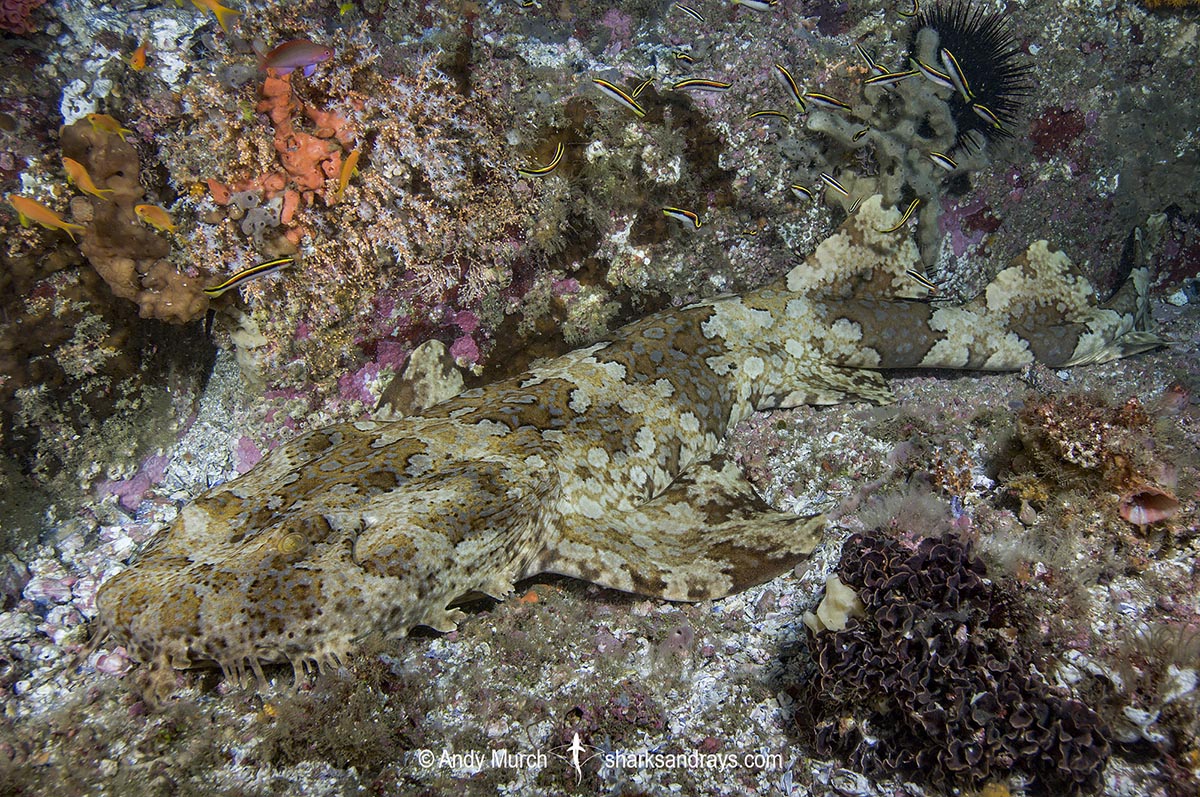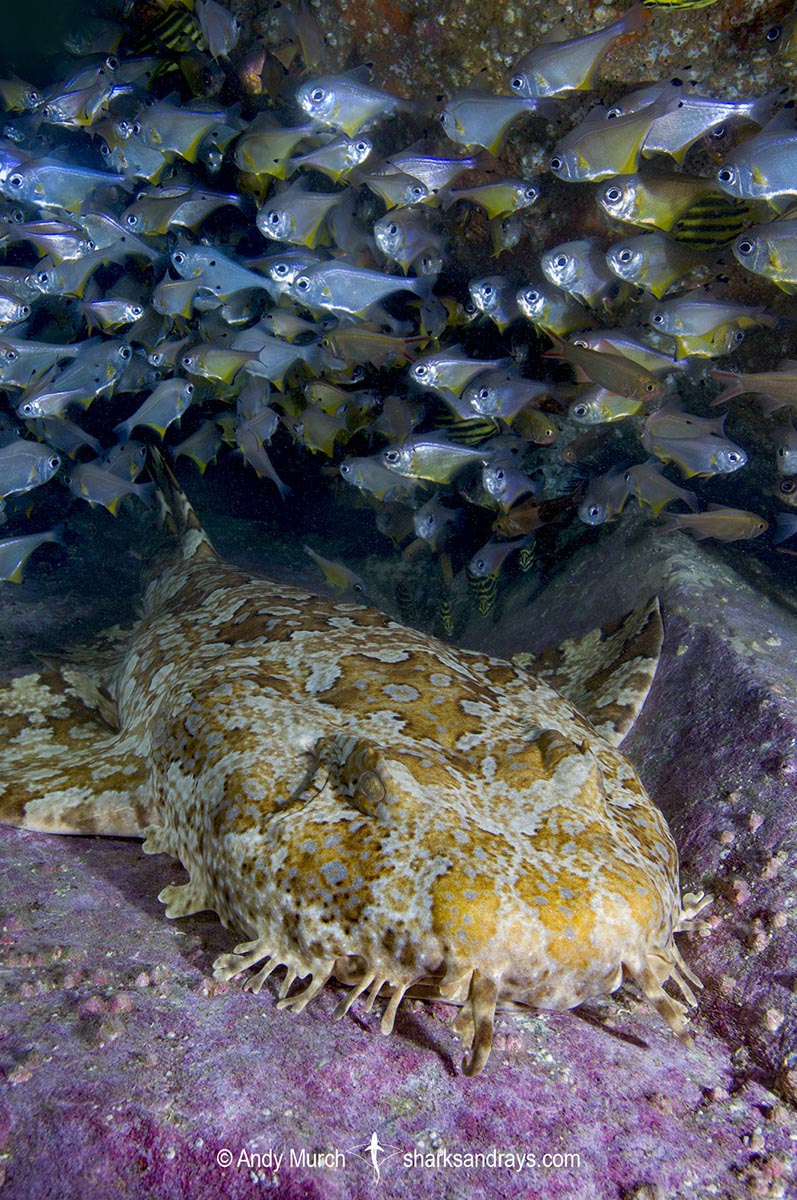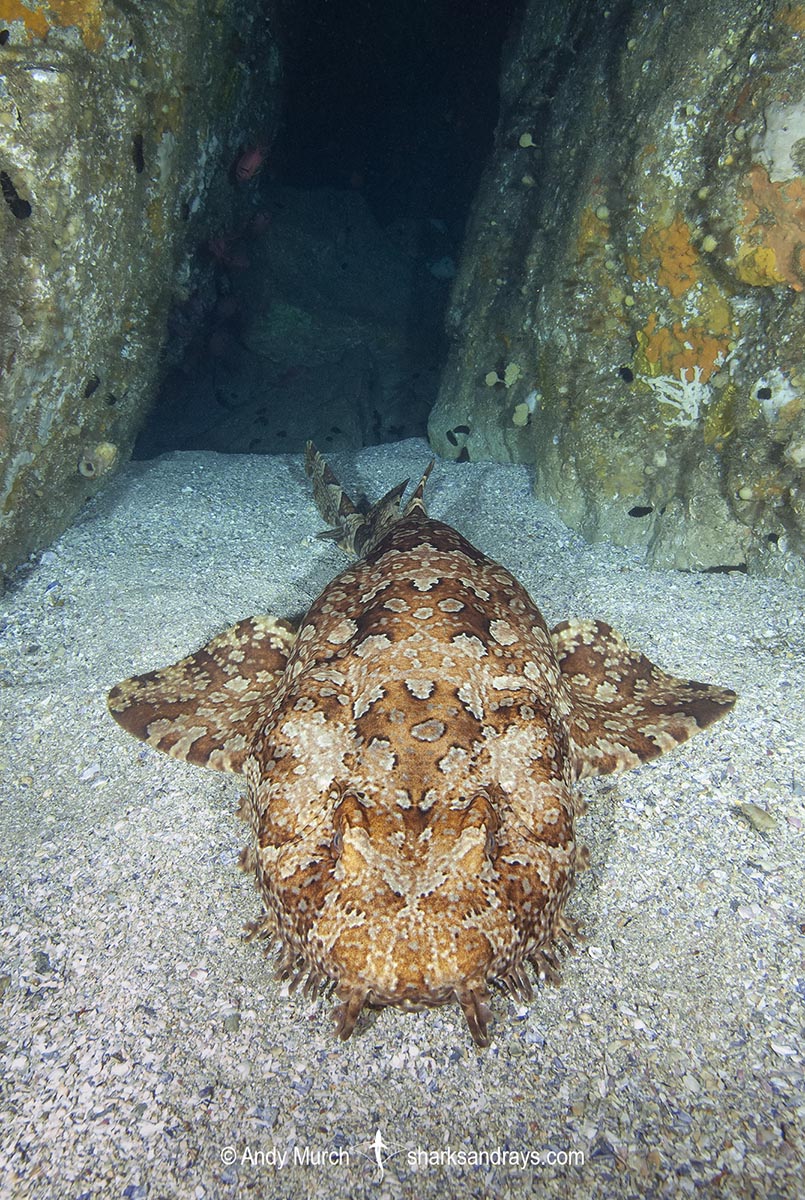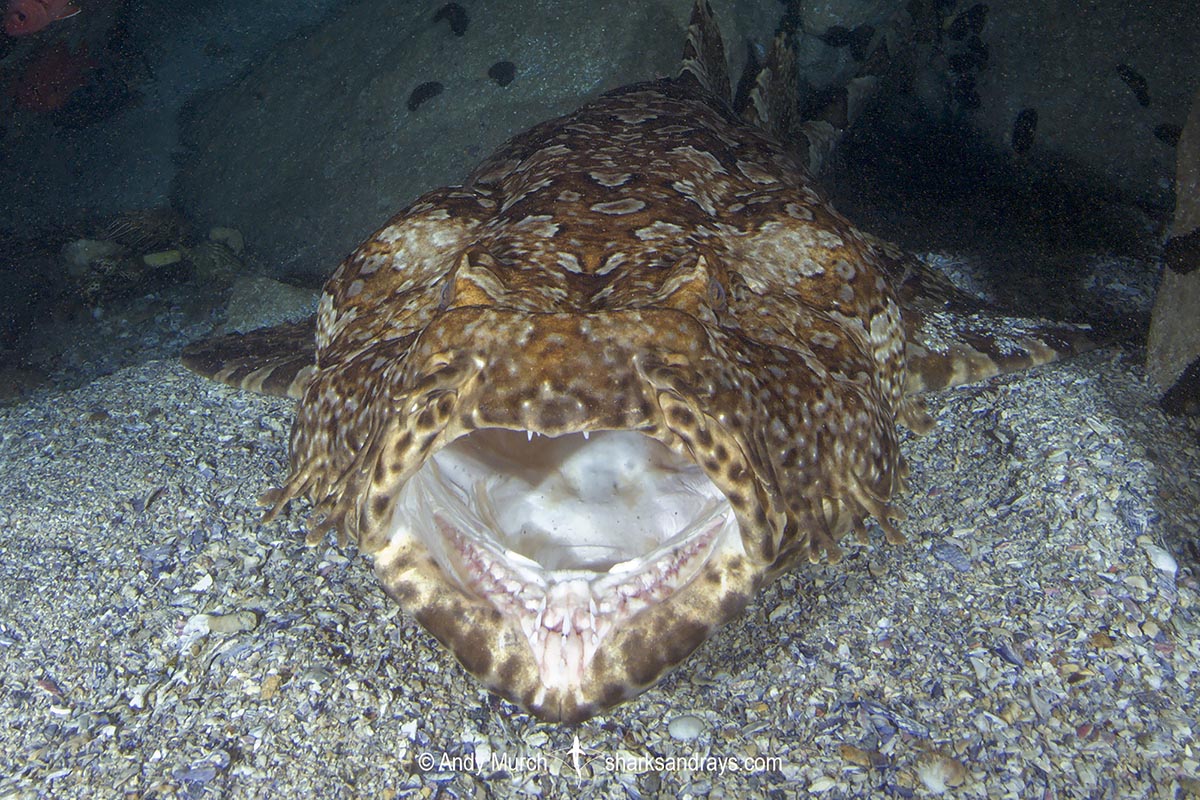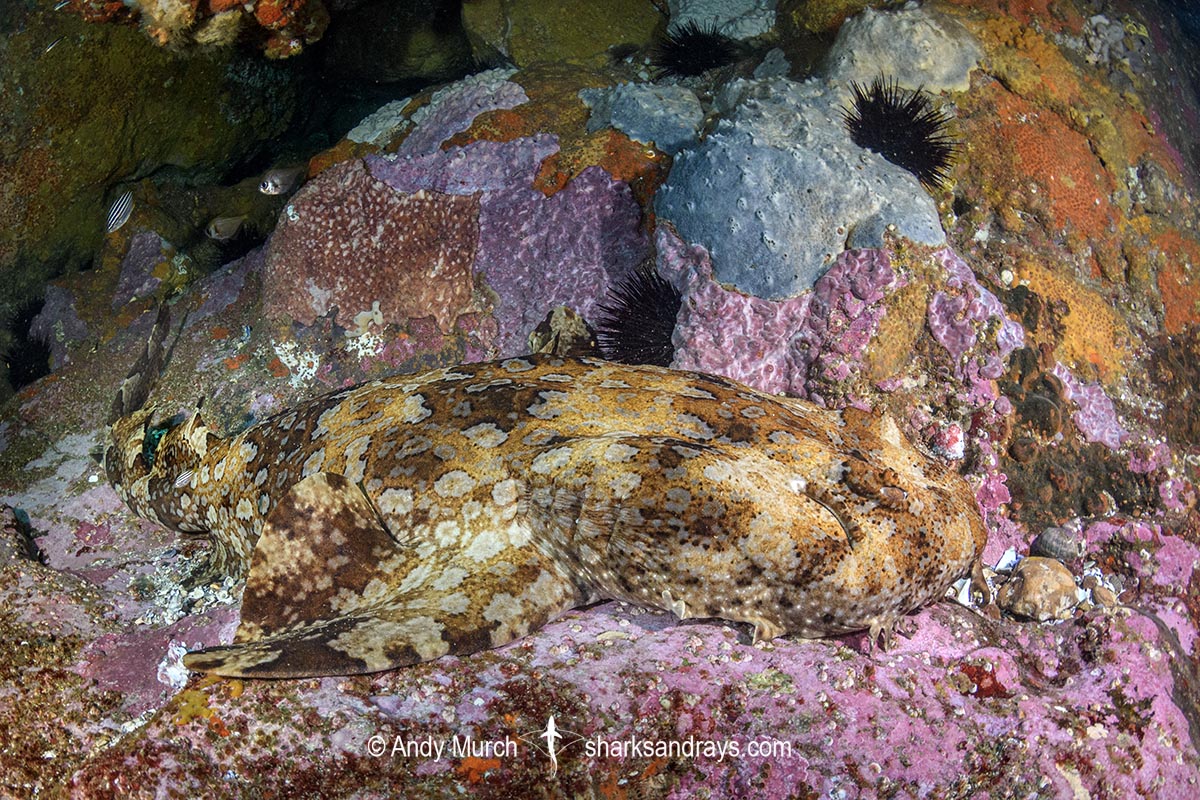Common name(s)
Banded Wobbegong, Gulf Wobbegong.
Binomial
Orectolobus halei.
Synonyms
Orectolobus ornatus
Identification
A large species of wobbegong with four groups of dermal lobes (skin flaps) below and in front of eyes on each side of head; no dermal lobes on chin; nasal barbel closest to mouth branched; five to six lobes in second preorbital group (rarely four) with lobes at extremities usually longer and branched; broad branched postspiracular groups.
Two equally sized, large dorsal fins. First dorsal origin anterior to pelvic fin insertion. Relatively broad caudal fin with a deep subterminal notch and long terminal margin.
No warty tubercles on head or body. Body covered in an intricate pattern dominated by nine dark irregular saddles edged with black lines followed by grayish coloration. Light brown and gray freckle-like blotches between saddles.
Previously thought to be the adult form of the Ornate Wobbegong (O.ornatus).
Size
Maximum verified length 206cm. Possibly up to 290cm. Size at birth approximately 25-30cm.

Conservation Status
LEAST CONCERN
The banded wobbegong was believed to have declined by 50% in the 1990s-2000s, but that assessment is now in doubt. Since 2008, strict catch limits has led to a probable population rebound. Consequently the IUCN recently listed the banded wobbegong as ‘fully recovered’, but it is worth mentioning that Orectolobus halei has high site fidelity, so it is important to maintain MPAs and other n0 take zones where this species is fully protected.

Habitat
Temperate and subtropical seas. Found on rocky and coral reefs and slopes adjacent to reefs and drop-offs. Inshore bays and around offshore islands, down to approximately 195m.
Distribution
The banded wobbegong is found from Moreton Bay (and possibly Hervey Bay) in Queensland, around the south coast of Australia including Tasmania, to Norwegian Bay in Western Australia.
Reproduction
Ovoviparous and lecithotrophic, i.e. the foetus is solely nourished by the yolk within the egg case.
Diet
Feeds on small bony fishes and elasmobranchs. An ambush predator that remains motionless while camouflaged against the reef. When an appropriately sized fish swims in front of its disguised mouth, the wobbegong lunges forward simultaneously stretching its mouth open. The process sucks water and fish into its mouth, which immediately snaps shut again, trapping its prey with needle-like teeth.
Behavior
Nocturnal. Rests by day under reef ledges or in caves. Relocates at night when hunting but often returns at dawn to the same resting spot.
Reaction to divers
Very easy to approach. Remains at rest, relying on camouflage unless harassed.
CAUTION: The banded wobbegong has been reported to have bitten divers that got too close to its mouth even when not disturbed.
Diving logistics
The Banded Wobbegong is a commonly encountered species, especially in New South Wales. One particularly good spot with an abundant population of O. halei (and numerous other elasmobranchs) is at Fish Rock near the town of Southwest Rocks.
Further north, Byron Bay is also an excellent spot to encounter this species.
What’s new
View our full list of updates
Similar species
Cobbler Wobbegong has large tubercles on both the head and body that are not present in any other members of the family Orectolobidae.
Spotted Wobbegong Distinguished by less intricate markings of dark grey/brown saddles on a yellow/tan background and large white ringed irregular spots.
Western Wobbegong Distinguished by slender unbranched post-spiracular dermal lobes, and a yellowish brown coloration with well-defined, darker brown saddles containing paler markings that lack whitish rings and blotches.
Floral Banded Wobbegong Distinguished by predominantly dark brown coloration with clusters of white spots that form flower-like patterns.

